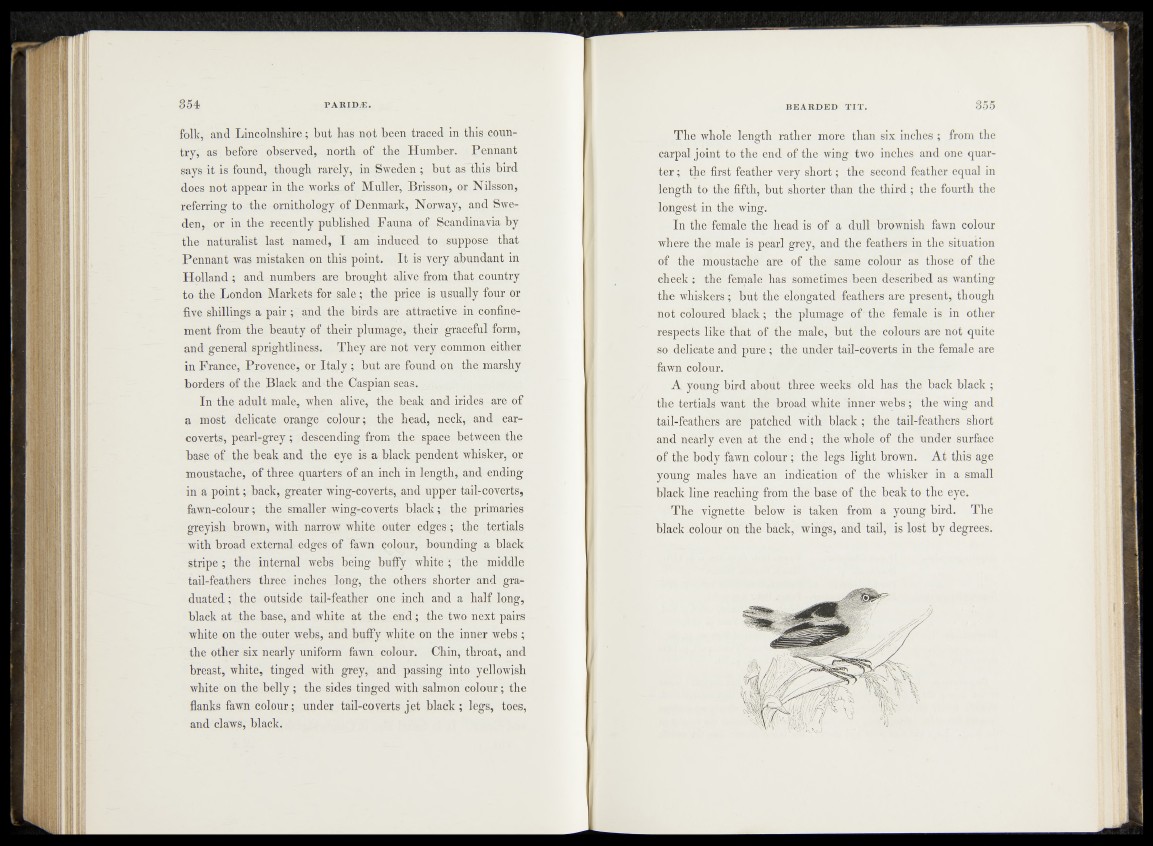
folk, and Lincolnshire; but has not been traced in this country,
as before observed, north of the Humber. Pennant
says it is found, though rarely, in Sweden ; but as this bird
does not appear in the works of Muller, Brisson, or Nilsson,
referring to the ornithology of Denmark, Norway, and Sweden,
or in the recently published Fauna of Scandinavia by
the naturalist last named, I am induced to suppose that
Pennant was mistaken on this point. I t is very abundant in
Holland ; and numbers are brought alive from that country
to the London Markets for sale ; the price is usually four or
five shillings a pair ; and the birds are attractive in confinement
from the beauty of their plumage, their graceful form,
and general sprightliness. They are not very common either
in France, Provence, or Italy ; but are found on the marshy
borders of the Black and the Caspian seas. ,
In the adult male, when alive, the beak and irides are of
a most delicate orange colour; the head, neck, and ear-
coverts, pearl-grey ; descending from the space between the
base of the beak and the eye is a black pendent whisker, or
moustache, of three quarters of an inch in length, and ending
in a point; back, greater wing-coverts, and upper tail-coverts,
fawn-colour; the smaller wing-coverts black; the primaries
greyish brown, with narrow white outer edges; the tertials
with broad external edges of fawn colour, bounding a black
stripe ; the internal webs being buffy white ; the middle
tail-feathers three inches long, the others shorter and graduated
; the outside tail-feather one inch and a half long,
black at the base, and white at the end; the two next pairs
white on the outer webs, and buffy white on the inner webs ;
the other six nearly uniform fawn colour. Chin, throat, and
breast, white, tinged with grey, and passing into yellowish
white on the belly; the sides tinged with salmon colour; the
flanks fawn colour; under tail-coverts jet black ; legs, toes,
and claws, black.
The whole length rather more than six inches ; from the
carpal joint to the end of the wing two inches and one quarter
; the first feather very short; the second feather equal in
length to the fifth, but shorter than the third ; the fourth the
longest in the wing.
In the female the head is of a dull brownish fawn colour
where the male is pearl grey, and the feathers in the situation
of the moustache are of the same colour as those of the
cheek ; the female has sometimes been described as wanting
the whiskers; but the elongated feathers are present, though
not coloured black; the plumage of the female is in other
respects like that of the male, but the colours are not quite
so delicate and pure; the under tail-coverts in the female are
fawn colour.
A young bird about three weeks old has the back black ;
the tertials want the broad white inner webs ; the wing and
tail-feathers are patched with black ; the tail-feathers short
and nearly even at the end; the whole of the under surface
of the body fawn colour ; the legs light brown. At this age
young males have an indication of the whisker in a small
black line reaching from the base of the beak to the eye.
The vignette below is taken from a young bird. The
black colour on the back, wings, and tail, is lost by degrees.